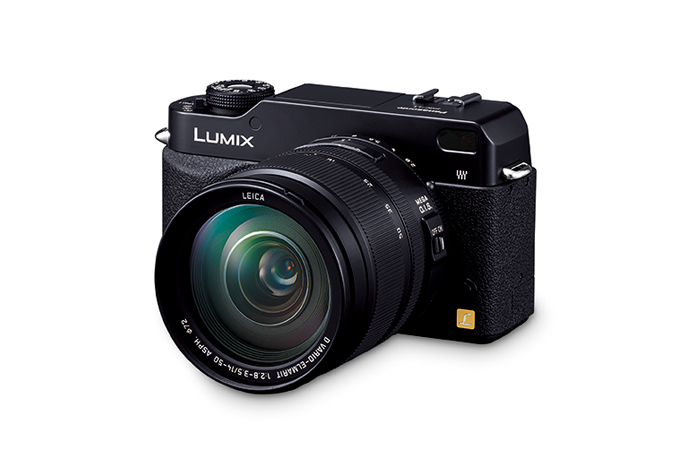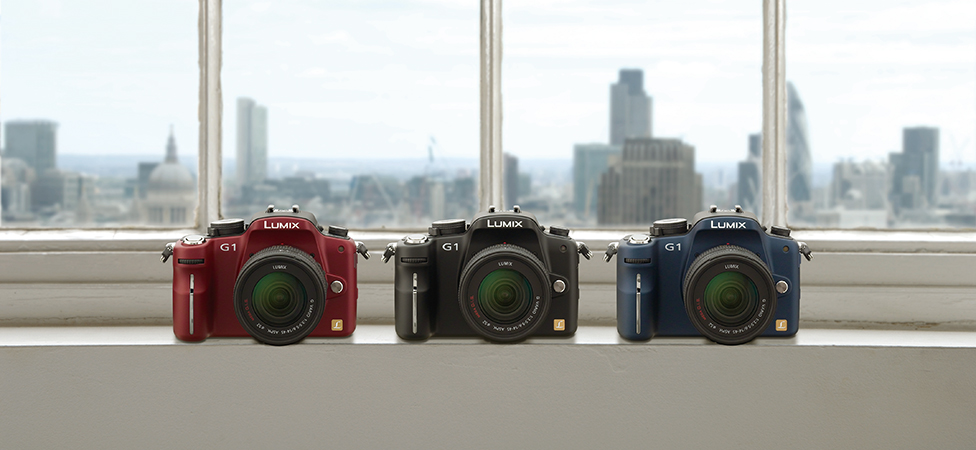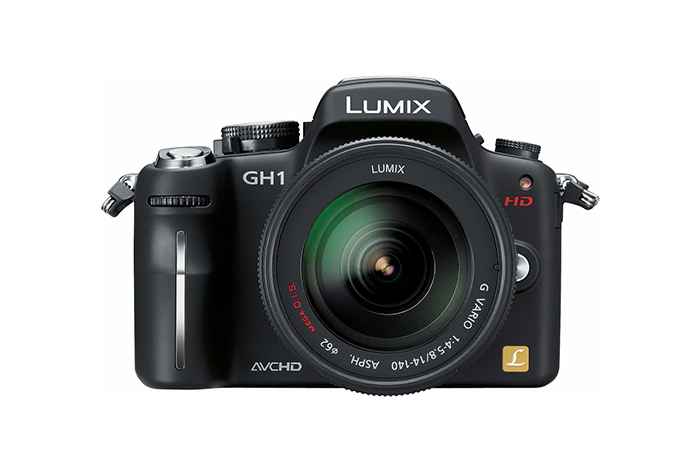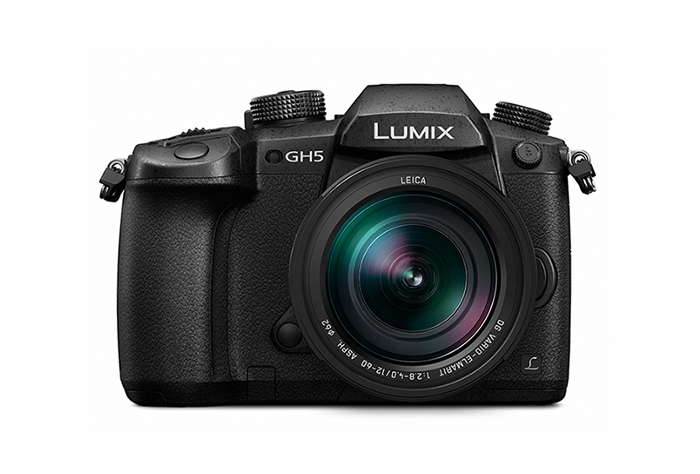 Chapter 3: Origin of Mirrorless Cameras
Chapter 3: Origin of Mirrorless Cameras
The New Trend of Mirrorless Cameras
While LUMIX was the last to enter the market, we set a vision to “create a new photographic culture of the digital era” and proposed new values every year such realizing the world's first functions and original technologies, which garnered favorable reviews. On the other hand, the development team had aspirations of “one day becoming a leading camera manufacturer of single lens reflex cameras” since the brand was launched. And finally, the project aimed at developing an SLR camera started in secret. This was around early autumn 2004.
Contents
-
 Section 1: Invitation to Four Thirds
Section 1: Invitation to Four Thirds
-
 Section 2: Aiming for an SLR camera that anyone could use
Section 2: Aiming for an SLR camera that anyone could use
-
 Section 3: Is the name “mirrorless” strange?
Section 3: Is the name “mirrorless” strange?
-
 Section 4: Obstacles standing in the way of the mirrorless camera
Section 4: Obstacles standing in the way of the mirrorless camera
-
 Section 5: Birth of the “GH Series”, a pioneer of the single lens video
Section 5: Birth of the “GH Series”, a pioneer of the single lens video
-
 Section 6: The ever-evolving “GH Series”
Section 6: The ever-evolving “GH Series”
Section 1: Invitation to Four Thirds
Digital SLR cameras began to spread rapidly from around 2003. Right around this time, a collaboration was discussed with Olympus, and in 2004 a secret project was set up.
As a result of repeated examinations from all angles by both companies, we came to the conclusion that it was best to endorse the Four Thirds System standard for digital SLR cameras that Olympus had advocated and commercialized. The Four Thirds, which had a smaller sensor size compared to the full-size, was selected because it was expected that the performance would be higher than that of the full-size sensor at that time due to the sensor’s technological innovation, and because it was determined that the Four Thirds was the most balanced format to easily shoot a wide range of photos while preserving the bokeh effect of the large sensor. Of course, the fact that it was a universal standard that allowed for greater flexibility in lenses and accessories was also one of the important deciding factors.
Panasonic was originally a company that produced and took part in various universal standards such as the SD memory card and Blu-ray Disc, and Olympus’ universal concept was what we could sympathize with as a creed. In January 2005, we agreed on the joint development of digital SLR cameras that were compliant with the Four Thirds System standard, and in 2006, we announced the L1, the first interchangeable lens digital SLR camera.

Section 2: Aiming for an SLR camera that anyone could use
At the time, the ideal digital SLR camera that we aimed for was a camera that was easy to use by anyone like a compact digital camera with an interchangeable lens. We always had a feeling that if the interchangeable lens system could become easier to use, it could dramatically change photography life and shooting styles, and this was something that we were exploring and researching.
.png)
When trying to form the ideal camera that could take beautiful photographs without any expert knowledge with a small light simple structure that didn’t break, we always came up with the answer that we didn't need a mirror box. The mirror box of an SLR camera was to check the subject by guiding the lens information to the optical viewfinder, and it was impossible to confirm the white balance or image quality setting, etc., which was processed after passing through the image sensor and image processing engine. Therefore, the image seen in the viewfinder before shooting and the final image after shooting was different, and it required specialized knowledge and a wealth of shooting experience.
By temporarily raising the mirror with the L1 and L10 (Unit No.2) SLR cameras, the effects were realized by equipping a real-time live view function that let you see the image that passed through the sensor and engine on the back monitor. With this, we became strongly aware of the problems with the optical viewfinder, and our goal was set to eliminate the mirror, use an electrical view finder and realize a “full-time live view single-lens” that made live viewing possible on the finder and back monitor.
.png)
In this way, our challenge to develop a new-generation single-lens system began, and we started to extract the necessary elemental technologies and their issues. By getting rid of the mirror, the flange back was reduced almost in half (approx. 20mm) of the Four Thirds System, and we proposed it as the Four Thirds extended format that could enable video shooting to Olympus and the collaborative project was launched.
Another underlying goal was to revive old lenses such as the Leica M-Lenses by attaching a mount adaptor, and this led to providing a spark that stimulated demand for used lenses.
At the joint press conference between the two companies held on August 5, 2008, we announced the Micro Four Thirds standard as well as our aim to develop a digital interchangeable lens camera that was “smaller, lighter and easy to use”. On September 12 that year, the G1 was announced as a creation of a new-generation digital interchangeable lens camera. At the same time, the development of HD video compatible model GH1 was also announced.

*As an interchangeable lens digital camera. As of the announcement on the September 12, 2008. According to our research.
Section 3: Is the name “mirrorless” strange?
At the time, the mirrorless cameras that we manufactured were viewed as a sub-stream but today they have transformed into a mainstream format as single-lens reflex cameras that can be used by anyone as intended. Before its release, there was a somewhat adverse reaction within the company that the word “less” in the name "mirrorless" carried a negative image. Have you heard of the design thesis, “less is more”? As the philosophy of “trimming something down to make it more enriched” indicates, the developers believed that the word “less” actually has a positive image and that the name is something that is decided by the user, not the industry. And indeed, it became widespread in a blink of an eye.
Section 4: Obstacles standing in the way of the mirrorless camera
The path to realizing a mirrorless camera was never smooth. In order to apply a similar method as a compact camera with an interchangeable lens camera, there were various obstacles to overcome and the engineers struggled every day.
First, a high-resolution viewfinder was required for the full-time live view, and we obtained information that there was the ideal finder that was decided to be adopted for the development of the in-house professional video camera. This caused a sudden increase in momentum and accelerated the development of elements dedicated to the mirrorless camera.
A wide range of development was essential, including the new image sensor for the full-time live view, a mutual communication system between the lens and the camera body, a high-speed, high-precision AF system, improvement of the shutter time lag, an image processing engine and a mirrorless interchangeable lens.

In this way, there was extraordinary passion and effort of the engineers behind the birth of the mirrorless interchangeable-lens camera that propelled an innovation suitable for the digital era.
Section 5: Birth of the “GH Series”, a pioneer of the single lens video
As you know, our GH Series has established a position as a single-lens camera that excels in video recording and continues to evolve to this day. Initially, the “H” in the GH Series referred to HD (High Definition), but today it is widely recognized as a hybrid of still images and videos.
Originally based on the hybrid concept, both still image and high-class video users were targeted since the early development of the mirrorless camera, so the terminals required for the lens and body communication system was modified from 9-pin of the Four Thirds to 11-pin to support videos. To tell the truth, the goal was to release the GH1 at the same time as the G1, but the video compatible lens and sensor development schedule was carefully examined and the release date was pushed back to the spring of 2009, approximately half a year after the release of the G1.

* Released on April 24, 2009. As the body of the interchangeable lens digital camera equipped with the video shooting function.
The wide array of video expressions due to interchangeable lenses is often stated as an attractive feature of single lens cameras that can’t be found in video cameras. However, because there weren’t many lenses that were compatible with video at the time, we developed an innovative zoom lens that enabled full-time AF with a silent design that was suitable for video shooting to coincide with the release of the GH1.
We also aimed for Full HD video shooting that was not yet common in digital cameras and newly developed an algorithm engine that could support it and a multi-aspect compatible sensor. At that time it was normal for an image to get cropped when changing the aspect ratio and for the angle of view to become narrower, the multi-aspect in which the angle did not change even if the aspect ratio was 16:9, which was the norm for videos, received high praise.
Q What is the biggest problem that cannot be avoided when handling videos?
That would be the problem of heat when recording for a long period of time. Because videos put a lot of strain on the camera, heat accumulates inside and it is easy to overheat. As we had been developing video cameras for many years, we had sufficient experience and knowhow regarding heat-resistant designs. We made the GH1 a little taller than the G1 and strengthened the heat dissipation effect based on a precise circuit design that calculates the heat distribution. We equipped a Dolby Digital Stereo Creator-type stereo microphone in this space as audio recording for shooting videos and devised it in a way that was worthy of a hybrid device. We continue to innovate this heat dissipation technology, an indispensable element for video cameras, as a basic specification of LUMIX’s hybrid devices. The unlimited recording time for video shooting that has been inherited by the GH Series could not be realized without the knowhow and technology that we have accumulated over many years.
Section 6: The ever-evolving “GH Series”
The arrival of the GH Series met a greater response than expected. Being able to enjoy image expressions with the bokeh effect thanks to the sensor that was larger than that of a consumer video camera and the quaint photo-like videos stirred up a great deal of excitement, and it began attracting attention in cinema filming locations including Hollywood.
Another indispensable element in the evolution of the GH Series was the increase in speed of the SD memory card. The video performance improved remarkably with each model and the transition to higher resolution and higher bit rate also progressed, but it wasn’t possible to wait or a recording medium that could handle them. To make sure there were no discrepancies in each device including the SD memory cards, we are proceeding with development by aligning the time axis while sometimes making requests with a view towards the evolution of related devices in the industry.
By continuing such efforts, the GH Series has established a unique position as a video device. The GH5, which was the world’s first* mirrorless interchangeable-lens camera to achieve 4K/60P video recording, is equipped with the performance of a professional camera and has been welcomed with high praise from many creators in professional sites. While interacting with many creators, one conclusion that we arrived at in our desire to continue working closely with creators and remain a trusted brand was the entry to the full-frame camera market.

*As a mirrorless interchangeable-lens camera. As of the announcement on September 20, 2016. According to our research.
While interacting with many creators, one conclusion that we arrived at in our desire to continue working closely with creators and remain a trusted brand was the entry to the full-frame camera market.
Continue to Chapter 4






